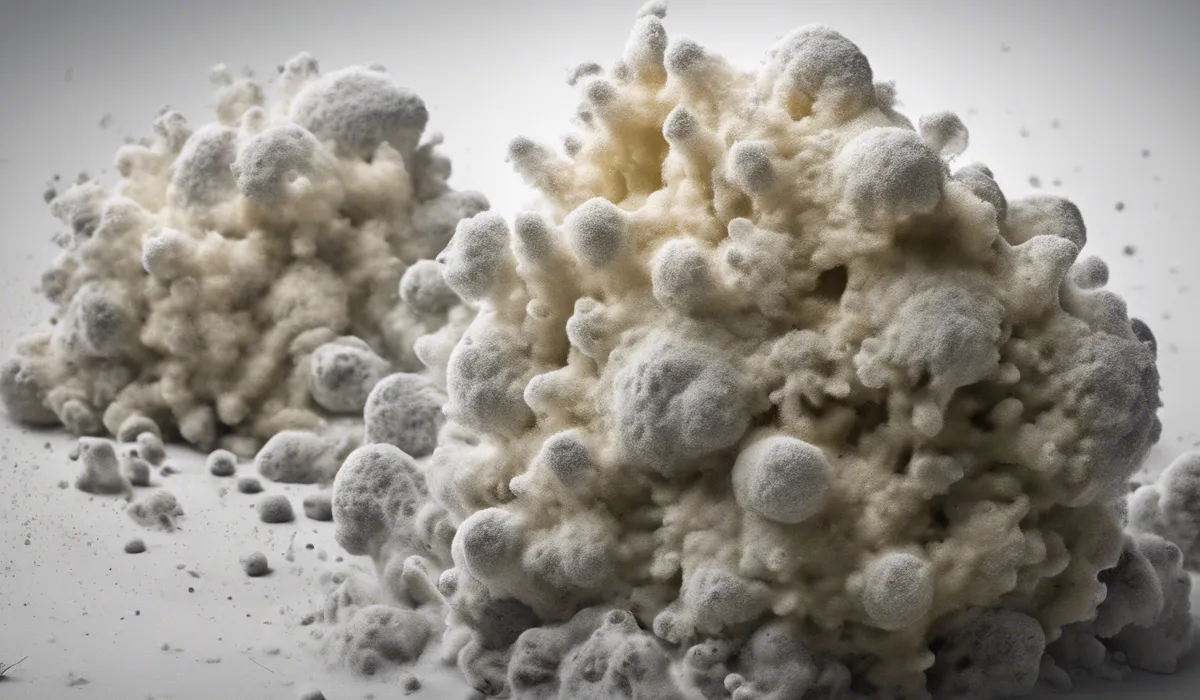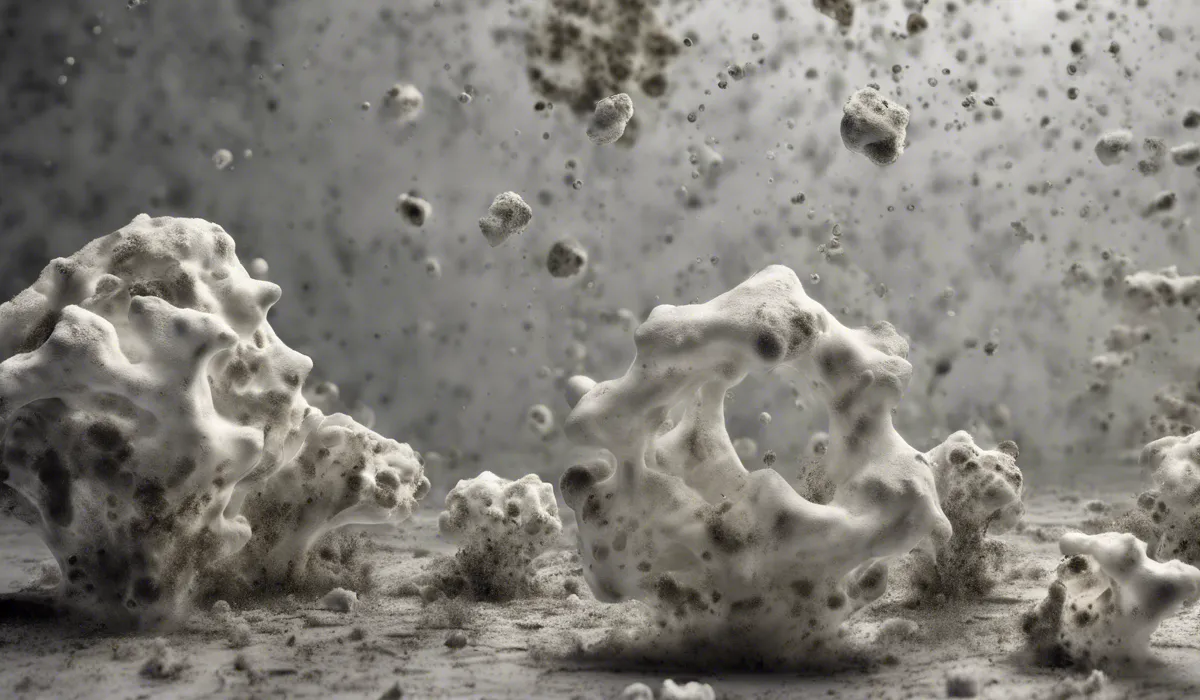Mold originates from microscopic spores that are present in the air. These spores thrive in moist environments, often growing on organic materials like wood, paper, or food. Mold can develop indoors when spores land on surfaces that provide the right conditions for growth.
Sources of Mold in the Environment

Outdoor Mold Spores
Mold is a natural part of the environment and its spores are virtually everywhere, including in the air we breathe.
Outdoors, mold plays a crucial role in breaking down dead organic matter such as fallen leaves, dead trees, and other plant material.
This process enriches the soil and is essential for the ecosystem. Mold spores can originate from these natural sources and be carried into our homes and buildings through open windows, doors, and ventilation systems.
Indoor Humidity and Dampness
Inside our homes, mold finds the perfect conditions to grow in places where there is moisture and dampness.
Bathrooms and kitchens are particularly susceptible due to the presence of water and steam from showers, sinks, and cooking.
Basements can also become mold hotspots, especially if they are poorly ventilated or if there is groundwater seepage. Controlling indoor humidity levels is key to preventing mold from taking hold.
Ventilation Systems
Ventilation systems and air conditioning units can distribute mold spores throughout a building.
If not properly maintained, these systems can also accumulate moisture and organic debris, creating an ideal environment for mold to grow and spread.
Regular cleaning and maintenance are critical to prevent mold from colonizing these hidden spaces.
Water Leaks and Flooding
Any source of water intrusion, such as leaks or flooding, can lead to mold growth. Materials that remain wet for 24 to 48 hours can start to grow mold.
It is important to correct any water leaks or flooding issues as soon as possible to prevent mold from becoming a larger problem.
Mold in Building Materials and Food
Building materials like drywall, wood, and carpet can support mold growth when they become damp.
Likewise, food and organic materials left unchecked can also become breeding grounds for mold.
Proper storage and prompt disposal of spoiled food along with monitoring the condition of building materials can help keep mold at bay.
Factors that Contribute to Mold Growth

Moisture and Water Accumulation
Moisture is the number one factor that contributes to mold growth. Whether it’s from leaky pipes, condensation, or high humidity, once mold spores find this moisture, they can start to grow into colonies.
It is essential to keep indoor spaces dry and well-aerated to prevent mold from finding a home.
Suitable Temperatures for Cozy Mold Growth
Mold thrives in temperatures that are comfortable for humans, typically between 60°F and 80°F (15°C and 26°C).
During these conditions, mold growth can accelerate, making it important to maintain a balance in indoor temperatures to deter mold development.
Organic Materials: The Mold Feast
Mold needs food to grow, and it finds it in organic materials such as wood, paper, and natural fibers commonly found in homes.
These materials can provide the nutrients mold requires when they become damp or wet. Regular cleaning and keeping organic materials dry are vital prevention strategies.
Poor Ventilation and Stagnant Air
Stagnant air and poor ventilation create an environment where moisture can accumulate, and mold spores can settle.
Ensuring that air circulates freely and that there is adequate ventilation in areas prone to dampness can help reduce the risk of mold growth.
Darkness and Shadowy Areas: Mold’s Hidden Havens
Mold does not require light to grow and can often be found in dark, shadowy areas of a building.
These areas can be more prone to moisture accumulation and are often overlooked during routine cleaning.
It’s important to monitor these areas and address any signs of dampness or mold growth.
Prevention and Control of Mold

Managing Humidity Levels: A Key Strategy
Regulating indoor humidity is crucial for preventing mold. Using dehumidifiers and air conditioners can help keep humidity levels in check, especially during hot, humid months.
Keeping humidity levels below 60% can significantly reduce the risk of mold growth.
Repair Water Leaks and Plumbing Promptly
Quickly addressing water leaks and plumbing issues can prevent mold from taking hold. It’s important to inspect pipes and fixtures regularly and to fix any leaks immediately to avoid creating a moist environment where mold can thrive.
Ensuring Proper Ventilation
Good ventilation is essential in areas of the home where moisture is generated, such as bathrooms, kitchens, and laundry rooms.
Using exhaust fans, opening windows, and ensuring that air can move freely can help prevent mold growth by reducing moisture.
HVAC Systems
Heating, ventilation, and air conditioning (HVAC) systems require regular maintenance to prevent mold from growing in the ducts and being distributed throughout the home.
Annual inspections and cleaning can help keep these systems mold-free.
Building and Renovation
When constructing or renovating a home, using mold-resistant building materials can help prevent mold problems before they start.
Materials such as mold-resistant drywall and paints that contain mold inhibitors are effective ways to reduce the risk of mold growth.
Mold Removal and Remediation
If mold is discovered, it’s important to remove it safely and effectively. Depending on the extent of the mold, professional remediation may be necessary.
It’s essential to address not just the mold itself, but also the source of moisture that allowed it to grow in the first place.
FAQs About Mold Origins
What causes mold to grow in homes?
Mold grows in homes when mold spores from the air land on moist surfaces that provide a suitable environment for growth, especially on materials like wood, paper, or food.
Where do mold spores come from?
Mold spores are microscopic and naturally present in the air, both indoors and outdoors.
Can mold grow on any surface in the house?
Mold can grow on various surfaces, especially porous and organic materials that retain moisture, such as wood, paper, carpet, and foods.
How quickly can mold develop in a moist environment?
Mold can start to grow within 24 to 48 hours in a moist environment under the right conditions.
Is mold present in all buildings?
Mold spores are ubiquitous, which means they can be found in the air of virtually all indoor and outdoor environments, but not all buildings have mold growth.
Final Thoughts
Mold arises from ubiquitous microscopic spores that drift through the air and find fertile ground in damp settings.
These spores preferentially colonize organic substances such as wood and paper, and when they land on suitably moist surfaces indoors, they can proliferate, leading to mold growth.
